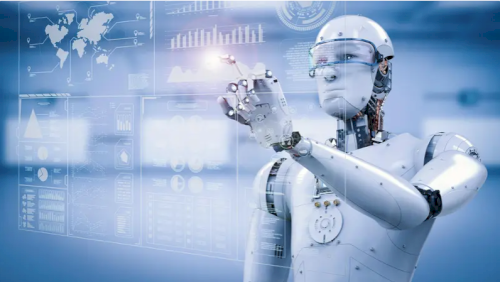
17 May .
3 Min Read .
966

In recent years, the field of translation has witnessed a significant transformation with the advent of Artificial Intelligence (AI). AI technologies, particularly machine translation, have gained prominence and are reshaping the translation landscape. This article explores the use of AI in translation, examines its current state, and discusses its potential implications on the translation market.
The Rise of AI in Translation:
AI-powered translation systems, such as neural machine translation (NMT), have shown remarkable progress in achieving more accurate and fluent translations. These systems utilize vast amounts of data, including multilingual corpora and previously translated texts, to learn and generate high-quality translations. Companies like Google, Microsoft, and DeepL have made significant advancements in this domain, offering free online translation services that have become widely accessible to users worldwide.
AI and the Role of Translators:
The introduction of AI in translation has raised concerns about the future role of human translators. However, it is crucial to understand that AI technology currently excels in certain domains, such as general language translation, but faces limitations in handling complex texts requiring context comprehension, cultural nuances, and domain-specific expertise. Human translators possess the ability to interpret the text in a holistic manner, ensuring accurate and culturally appropriate translations. Therefore, rather than replacing translators, AI is likely to augment their capabilities and streamline the translation process.
Enhancing Translation Efficiency:
One of the significant advantages of AI in translation is its potential to improve efficiency. AI-powered translation tools can assist human translators by providing suggestions, automating repetitive tasks, and offering instant translations. This enhances productivity, reduces turnaround time, and enables translators to focus more on tasks that require their expertise, such as content editing, proofreading, and localization. As a result, AI can contribute to higher output and increased overall quality in the translation industry.
Impact on the Translation Market:
The integration of AI in the translation industry is expected to have a transformative impact on the market. It has the potential to streamline workflows, lower costs, and increase the availability of translation services. Small businesses and individuals who previously had limited access to professional translation services can now benefit from AI-powered online translation platforms. However, it is crucial to note that while AI can handle certain types of translation tasks, it is unlikely to replace human translators for specialized fields, such as legal, medical, or technical translations, where accuracy and expertise are paramount.
Conclusion:
The utilization of AI in translation has ushered in a new era of possibilities. It has significantly enhanced the efficiency of translation processes, making translation services more accessible and cost-effective. While AI may impact the role of translators to some extent, it is more likely to complement their skills rather than replace them. Human translators' expertise in understanding context, culture, and domain-specific knowledge remains indispensable in achieving high-quality translations. The future of translation lies in a symbiotic relationship between human translators and AI technology, where the collaboration between the two can drive advancements and provide better translation solutions for a globalized world.
